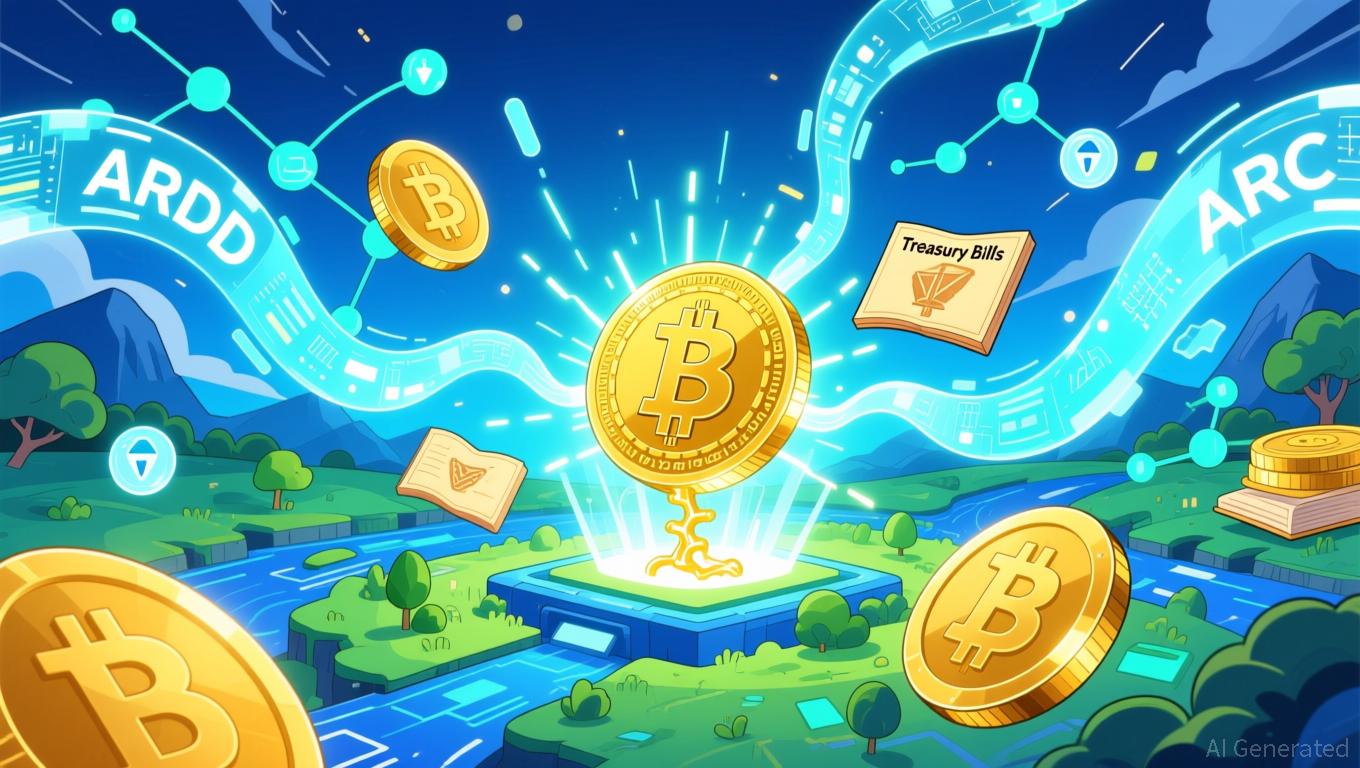India's plan for a sovereign stablecoin disrupts the international cryptocurrency landscape through its dual-rupee approach
- India's government collaborates with Polygon and Anq to develop a sovereign-backed stablecoin (ARC) collateralized by G-Secs and Treasury Bills. - The "Twin-Rupee" model combines RBI's CBDC for settlement with private ARC tokens for transactions, balancing innovation and monetary control. - Polygon's institutional tokenization expertise and Anq's regulatory insights aim to reduce remittance costs and strengthen India's bond market liquidity. - The initiative counters foreign stablecoin risks by anchoring
India's cryptocurrency sector is experiencing significant changes as blockchain companies Polygon and Anq consult with Sanjeev Sanyal, economic advisor to Prime Minister Narendra Modi, to discuss the possibility of a government-backed stablecoin framework
The envisioned stablecoin, provisionally called the Asset Reserve Certificate (ARC), would be entirely backed by Indian government securities (G-Secs) and Treasury Bills,

Polygon, recognized globally for its blockchain scaling solutions, and Anq, a fintech company based in Bangalore, are combining their strengths for this initiative
This project demonstrates India’s careful yet forward-thinking stance on digital finance. While stablecoins such as
As Polygon and Anq continue to develop their proposal, government advisors are reportedly emphasizing the need for clear regulations to encourage adoption while protecting financial stability
Disclaimer: The content of this article solely reflects the author's opinion and does not represent the platform in any capacity. This article is not intended to serve as a reference for making investment decisions.
You may also like
XRP News Today: XRP as a Gateway to Trillion-Dollar Transactions: Will It Surpass BTC and ETH?
- XRP's rally depends on breaking $2.40–$2.45 resistance against BTC/ETH to outperform major cryptocurrencies. - Institutional integrations and post-SEC clarity boost XRP's utility in cross-border payments and custody solutions. - Rising realized gains and profit-taking pressure challenge near-term optimism despite 30% YoY ledger volume growth. - ETF approval could inject $1B liquidity, but sustained momentum requires overcoming historical resistance clusters.

Cardano News Update: The 2025 Crypto Battle—AI-Fueled Hype Versus Widespread Acceptance
- Blazpay and Cardano lead 2025 crypto race with AI tools and real-world adoption strategies, outpacing Avalanche. - Blazpay's $843,700 presale targets speculative investors via AI-powered multichain platform with 800,000+ users. - Cardano partners with Wirex to launch Visa-compatible crypto cards, aiming to bridge TradFi and blockchain ecosystems. - Divergent approaches highlight industry split between high-risk AI speculation and practical crypto integration for mass adoption.

Resilient and Profitable: Top 3 Meme Coins Proving Their Strength Amid the Market Sell-Off

PENGU Bulls Return With Breakout Hopes Above $0.017
